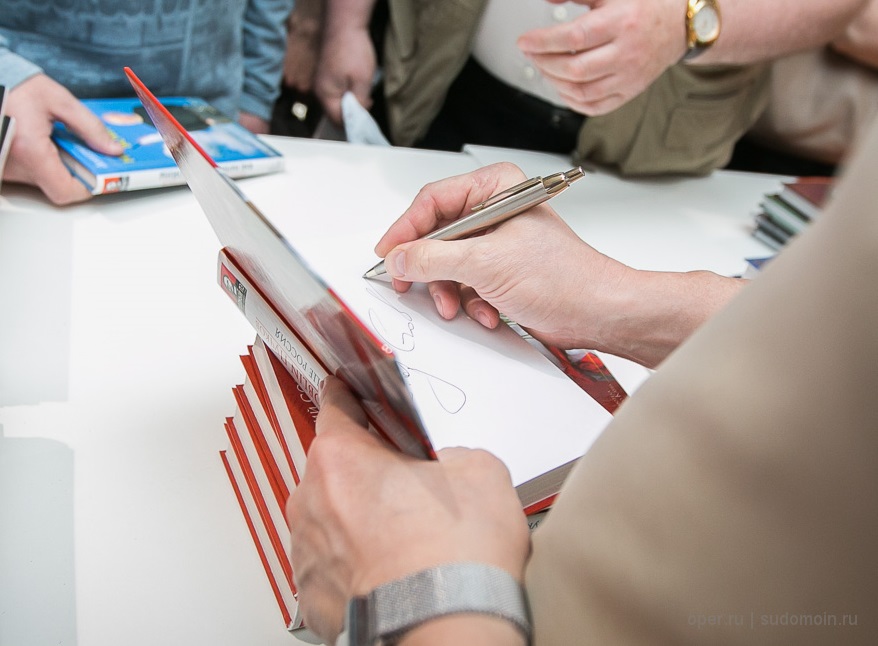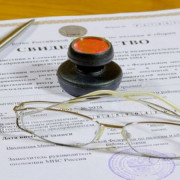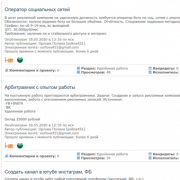Фил найт: чудак, торгующий спортивной обувью со своего грузовичка, сумевший стать владельцем преуспевающей мировой корпорации
Содержание:
- Продажи с багажника
- “Продавец обуви” автобиография
- New Running Shoe
- The Shoe Business
- New Running Shoe
- Branding and advertising do not have to come before selling
- Erken dönem
- Knight’s Empire
- Hardship and sacrifice build great companies
- Символ победы
- Команда гениальных «фриков»
- Ранний период жизни
- Asian Labor Issues
- Первые кроссовки Nike
- Реклама
- 38 Inspirational Phil Knight Quotes:
- Карьера продавца обуви
Продажи с багажника

Не все компании начинаются с миллионов долларов. Первые продажи Blue Ribbon Sports получил, разъезжая на маленьком фургончике по Тихоокеанскому побережью. Фил останавливался около стадионов и предлагал чудо-кроссовки невероятного качества.
Весть о качественных кроссовках быстро разлетелась по округе. Модели были удобны и недороги. Молва дошла даже до раскрученного бренда Adidas. Какое-то время компания считала Blue Ribbon Sports конкурентом. Но, несмотря на успех, доходы были небольшими.
Придуманное название чуть не погубило компанию. Один гражданин США обвинил Найта в краже бренда. Чтобы разъяснить ситуацию, Фил отправился на встречу с владельцем компании Onitsuka в Японию. Правда осталась на стороне Найта. Он получил лицензию на продажу кроссовок в 13 штатах США.
“Продавец обуви” автобиография

В 2016 году Фил выпускает автобиографию, где рассказывает о личностном росте и развитии компании. Автор не зацикливается на бизнес-идеях, воронках продаж и других предпринимательских темах. В книге повествуется о внутренних проблемах Фила.
Книга учит читателя мыслить широко во благо других людям. Главный фактор для Филипа – польза для потребителя. Основные качества для создания своего бренда – целеустремлённость, сила воли и понимание проблем покупателей.
На русский рынок книга поступила в 2017 году. Читатели присвоили ей титул лучшей автобиографии бизнесмена. Многие утверждали, что во время чтения проливали ни одну слезу.
New Running Shoe
That interest in sports-and especially track-gave Knight the impetus to study the way track shoes were being made and marketed in the late 1950s. For assistance he consulted his coach, the University of Oregon’s famed Bill Bowerman, who himself would become a senior member of the Nike team. Together they determined that American shoes were inferior in style and quality, too heavy, and too easily damaged. The Japanese, on the other hand, were experimenting with new, trimmed-down styles fashioned in lightweight, hardy nylon. Knight wrote his Stanford business-school term paper on the subject, then a few years later got involved personally by visiting Japan and arranging to import new-design running shoes himself.
«Knight ran Blue Ribbon Sports out of a storefront hole-in-the-wall next to the Pink Bucket Tavern in a working-class section of Portland,» noted Sports Illustrated writer Donald Katz. «From the beginning Knight’s animating idea was to promote high-quality, low-cost Japanese shoes, at a time when high quality was rarely associated with Japanese products, and to eventually displace Adidas, the triple-striped German shoes worn by all serious track and field athletes at the time.»
«In the early days, anybody with a glue pot and a pair of scissors could get into the shoe business,» Knight told Geraldine Willigan in a Harvard Business Review interview. «So the way to stay ahead was through product innovation. We were also good at keeping our manufacturing costs down. The big, established players like Puma and Adidas were still manufacturing in high-wage European companies. But we knew that wages were lower in Asia.» This fact has garnered criticism for Knight and Nike by those who point out the vast difference between the wages earned by a factory worker in Indonesia compared to the salary drawn by a Nike celebrity endorser. But Knight insisted in the Sports Illustrated article that «we’re not gouging anybody. … A country like Indonesia is converting from farm labor to semiskilled-an industrial transition that has occurred throughout history. There’s no question in my mind that we’re giving these people hope.»
The Shoe Business
Japan was a logical stop for Knight since he had written about the country while at Stanford. He believed Japan had superior production facilities and low-cost manufacturing processes; this made it a good choice for importing goods to American consumers. If costs were kept low, selling prices could be lower as well. Knight’s instincts proved correct. While in Japan, he discovered an athletic shoe that he felt was far better than any available in the United States—the Oniksuka Tiger. Knight took an enormous chance: he bought a large shipment of the shoes to sell at home. This marked the beginning of Knight’s future in athletic shoe sales.
Knight returned to the United States to work at the accounting firm of Coopers & Lybrand. At the same time, he patiently waited for his Tiger shoe shipment to arrive at his company headquarters called Blue Ribbon Sports. Blue Ribbon was made up on the spot when Knight placed his order; his company’s headquarters were located in his parents’ house. Knight also brought his former coach on board, and the two formed a partnership. Bowerman handled the research and development end of the business, while Knight focused on marketing and sales.
When the two hundred pairs of Tiger shoes finally arrived in 1963, Blue Ribbon Sports became the only distributor in the United States selling the Japanese-made running shoes. Knight knew the shoes wouldn’t sell themselves, so he
spent hours after work and on weekends talking about them to anyone who would listen. He got the best response from runners like himself, so he went to countless athletic events with a trunk full of shoes and big dreams.
New Running Shoe
That interest in sports-and especially track-gave Knight the impetus to study the way track shoes were being made and marketed in the late 1950s. For assistance he consulted his coach, the University of Oregon’s famed Bill Bowerman, who himself would become a senior member of the Nike team. Together they determined that American shoes were inferior in style and quality, too heavy, and too easily damaged. The Japanese, on the other hand, were experimenting with new, trimmed-down styles fashioned in lightweight, hardy nylon. Knight wrote his Stanford business-school term paper on the subject, then a few years later got involved personally by visiting Japan and arranging to import new-design running shoes himself.
«Knight ran Blue Ribbon Sports out of a storefront hole-in-the-wall next to the Pink Bucket Tavern in a working-class section of Portland,» noted Sports Illustrated writer Donald Katz. «From the beginning Knight’s animating idea was to promote high-quality, low-cost Japanese shoes, at a time when high quality was rarely associated with Japanese products, and to eventually displace Adidas, the triple-striped German shoes worn by all serious track and field athletes at the time.»
«In the early days, anybody with a glue pot and a pair of scissors could get into the shoe business,» Knight told Geraldine Willigan in a Harvard Business Review interview. «So the way to stay ahead was through product innovation. We were also good at keeping our manufacturing costs down. The big, established players like Puma and Adidas were still manufacturing in high-wage European companies. But we knew that wages were lower in Asia.» This fact has garnered criticism for Knight and Nike by those who point out the vast difference between the wages earned by a factory worker in Indonesia compared to the salary drawn by a Nike celebrity endorser. But Knight insisted in the Sports Illustrated article that «we’re not gouging anybody. … A country like Indonesia is converting from farm labor to semiskilled-an industrial transition that has occurred throughout history. There’s no question in my mind that we’re giving these people hope.»
Knight’s reputation in the track and field world also helped him gain an early edge. «We just tried to get our shoes on the feet of runners,» he said in Willigan’s article. «And we were able to get a lot of great ones under contract-people like Steve Prefontaine and Alberto Salazar-because we spent a lot of time at track events and had relationships with the runners, but mostly because we were doing interesting things with our shoes.»
Branding and advertising do not have to come before selling
As we saw in the introduction, Nike is considered one of the greatest brands of our times. Yet founder Phil Knight is not an advertising man. In fact, he was an accountant for most of the early years of Nike. That’s right. He did Nike as a side-job before going “all-in.”
Knight ran the business on a simple premise: a relentless focus on sales.
There was no pre-conceived idea by an advertising agency to create Nike. Nike was not even called Nike for most of its first decade in existence! Early on, the company was known as Blue Ribbon Sports and lived from shipment to shipment, just selling enough to increase the order size each time.
 The original shoes imported by Blue Ribbon were the Onitsuka Tigers, the company that is now Asics.
The original shoes imported by Blue Ribbon were the Onitsuka Tigers, the company that is now Asics.
Knight’s focus on sales doesn’t mean you should ignore brand strategy nor advertising. And of course, times are different now. Still, Nike is an excellent example of a company where market demand and a strong emphasis on sales proceeded everything else. They didn’t spend years in a laboratory building a product nobody wanted. Instead, as Marc Andreessen has famously said about real product/market fit, the market pulled the product out of the company, not the other way around.
It’s something to think about: strong market demand and a relentless focus on sales came first. Those efforts laid the foundation for one of the greatest brands of all time. It did not happen the other way around.
Erken dönem
Phil Hampson Knight, Portland, Oregon’da , bir avukat olan Bill Knight ve eşi Lota Cloy (Hatfield) Knight’ın oğlu olarak dünyaya geldi. Knight, Eastmoreland’ın Portland semtinde büyüdü ve Cleveland Lisesi’ne girdi . Bir kaynağa göre, «Babası , oğlunun kendi başına iş bulması gerektiğine inanıp gazetesinde [şu anda feshedilmiş olan Oregon Journal ] yaz işini vermeyi reddettiğinde ,» Knight » , çalıştığı rakip Oregonian’a gitti. Sabah vardiyası spor skorlarını listeliyor ve her sabah yedi mil koşarak eve dönüyordu. »
Şövalye eğitimine devam etti Oregon Üniversitesi’nde de Eugene o mezun kardeşidir, Phi Gamma Delta , kardeşlik için bir spor muhabiri oldu Oregon Günlük Emerald ve 1959 yılında bir gazetecilik diploması.
Oregon’da bir orta mesafe koşucusu olarak, kişisel en iyi performansı 4 dakika 13 saniyede 1 mil (1,6 km) idi ve 1957, 1958 ve 1959’daki pist performansları için üniversite harfleri kazandı . 1977’de Bowerman ve Geoff ile birlikte Hollister, Knight Athletics West adlı bir Amerikan koşu takımı kurdu .
Knight’s Empire
During its first year in business, Blue Ribbon Sports made $8,000; ten
years later Knight and Bowerman changed Blue Ribbon Sports to Nike and
were making $2 million in sales. Over the next several years Knight became
one of the most recognized and powerful men in sports. By 1983, however,
he had grown tired of running a company and decided to leave Nike. Since
he had once taught business classes at Portland State University in
Portland, Knight considered returning to the classroom full-time. Yet
after he left his Nike kingdom, business began to suffer and so did he.
Knight missed Nike as much as the company missed his leadership, so not
long after, he went back to reclaim his throne.
Knight returned to Nike with a new appreciation of the company, its
products, and extraordinary atmosphere. The headquarters, called a
«campus,» was always teaming with people—both
employees and often the athletes endorsed by Nike. Knight had built an
empire unlike any other, but he knew the job was far from over. Nike
continued developing the shoes and clothing of the future, while giving
something back to communities by promoting environmental awareness,
sponsoring athletic events, and even building gyms and skate parks.
Nike’s headquarters in Beaverton, Oregon, is like a giant
playground for athletes with miles of running and jogging trails
surrounding the building.
Over the years Knight remained loyal to the University of Oregon, where he
had met Coach Bowerman and run on the track team. Knight became the
school’s largest donor, giving huge sums of money to help promote
not only athletics, but to build a library, a stadium and to provide for
other needs. In 1993,
Sports Illustrated
magazine said Knight was the most powerful force in sports, an
interesting honor since he neither participated in nor owned a
professional sports team. Instead, Phil Knight was a powerful force of a
different kind—he ran a company so closely identified with sports
and champions, that everyone wanted to be seen in Nike shoes or clothes,
or using
Nike sports equipment. Still an athlete himself, Knight runs five miles
everyday and, yes, he wears Nike shoes.
Hardship and sacrifice build great companies
Read Shoe Dog and you understand why entrepreneurship takes Superman-persistence. It doesn’t come easy. There will be shame, guilt, and sorrow along the way, plenty of it.

Well into his thirties, and after years of hard work, Knight still had a maxed out credit card and couldn’t pay even a small bill on a trip with a friend.
And it’s not just being broke personally. The levels of debt entrepreneurs have to live with in the face of constant uncertainty can be hard to deal with. Knight is no exception.
But worst of all are the sacrifices required from the loved ones around you. Entrepreneurs, experts in optimism and selling their ideas, can drag others into an adventure they might not want to be in. Knight’s wife, Penelope, suffered a similar fate as we learn from Knight’s final word of thanks in the book.
Символ победы
Компания Фила Найта и Билла Бауэрмана могла исчезнуть в любой момент. Все заработанные деньги вкладывались в дальнейшее производство кроссовок. Nike стали публичными лишь в 1980 году, а до этого постоянно кредитовались.
Победа стала важным словом в истории Nike. Это значило выжить. Это значило победить adidas в конкурентной борьбе. Это значило стать золотым стандартом качества.
Победы спортсменов, подписавших контракты с компанией, – это тоже победы Nike. Звёздный стайер Стив Префонтейн, экс-рекордсмен мира в марафонском беге Альберто Салазар, экс-рекордсмен в спринте Майкл Джонсон одерживали свои победы в обуви Nike.
Действующие звёзды лёгкой атлетики, включая мирового рекордсмена на 5000 метров Джошуа Чептегеи и элитных марафонцев Кененису Бекеле и Элиуда Кипчоге, выступают, побеждают и ставят рекорды в обуви этого бренда.
Крылатый образ Ники – богини победы, пришедший во сне Джеффу Джонсону в далеком 1971 году, оказался пророческим. Имя бренда стало символом победы и рекордов не только для профессиональных спортсменов, но и для любителей.
Сейчас это слоган и важнейшая идея Nike. Каждая пробежка, каждая тренировка, каждый забег, которые вы совершаете, – это ваши персональные победы.
Купить книгу «Продавец обуви. История компании Nike, рассказанная ее основателем»
Команда гениальных «фриков»

(На фото: Билл Боверман)
Совершенно случайно к компании присоединился Билл Боверман. Он был тренером Фила в секции по бегу. Когда они разговорились, Фил узнал, что Боверман буквально одержим спортивной обувью. Он был тем, кого в этой индустрии называли «Shoe Dog», человеком, который считает, что от качества обуви зависит победа спортсмена на соревнованиях. Узнав об этом, Фил попросил Билла присоединиться к его компании, на что тот незамедлительно согласился. Т.к. Билл тренировал и других спортсменов, в том числе и олимпийских, он помогал Найту искать новых покупателей. Боверман стал своего рода евангелистом компании. Кроме того, он был еще и изобретателем. Например, чтобы кроссовки были максимально легкие и пластичные, Боверман использовал при изготовлении не обычную свиную кожу, а рыбью. Это снижало вес обуви и помогало спортсменам добиваться высоких результатов. За счет их побед росла и слава компании, все больше людей хотели покупать кроссовки марки Blue Ribbon. Компания начала расширяться. Первых сотрудников Фил отбирал сам. Он искал людей увлеченных, тех, кому было бы интересно развивать молодую компанию. Фил вспоминает, что многие из них были настоящими «фриками», в хорошем смысле этого слова. Они готовы были работать днями и ночами, что самое интересное, им это доставляло удовольствие.
Вместе с ростом компании, возникла необходимость создания собственного бренда. У команды Найта уже было много своих наработок и они больше не нуждались в поддержке японских коллег.
Любопытно то, что название Nike придумал не Фил. Оно приснилось во сне Джеффу Джонсону, первому официально оформленному сотруднику «Голубой ленты», который занимался дизайном и разработкой новой обуви. В своем сне Джефф увидел тот самый античный замок богини Ники. Позже, рассказав о сне Филу, он поделился идеей, что Nike было бы идеальным названием для их новой компании. Найт горячо поддержал Джонсона. Так родился новый бренд, который сейчас занимает лидирующие позиции среди всех компаний-производителей спортивной одежды.
Ранний период жизни
Фил Хэмпсон Найт родился в Портленде, штат Орегон , в семье Билла Найта , юриста, ставшего издателем газеты, и его жены Лоты Клой (Хэтфилд) Найт. Найт вырос в Портленде, районе Истморленда , и учился в Средней школе Кливленда . Согласно одному источнику, «когда его отец отказался дать ему летнюю работу в своей газете [ныне несуществующей Oregon Journal ], полагая, что его сын должен найти работу самостоятельно,« Найт »отправился в конкурирующий Oregonian , где он работал. в утреннюю смену подсчитывала спортивные результаты и каждое утро бегала домой полные семь миль ».
Найт продолжил свое образование в Университете Орегона в Юджине , где он является выпускником братства Phi Gamma Delta , был спортивным репортером Oregon Daily Emerald и получил степень журналистики в 1959 году.
Как бегун на средние дистанции в Орегоне, его личный рекорд составил 1 милю (1,6 км) за 4 минуты 13 секунд, и он выигрывал университетские грамоты за свои выступления на беговой дорожке в 1957, 1958 и 1959 годах. В 1977 году вместе с Бауэрманом и Джеффом. Холлистер, Найт основал американскую команду бега под названием Athletics West .
Asian Labor Issues
The company came under increasing scrutiny for its wages and working conditions in Indonesia, China, and Vietnam. United Nations Ambassador, Andrew Young, released a report finding no issue with Nike’s factories, noting that facilities were «clean, organized, adequately ventilated and well lit,» according to a Reuters Business Report article. However, human rights groups charged that Indonesian workers were incessantly striking over low wages; Nike workers received $2.46 per day in a nation that counted $4 per day as the minimum subsistence wage.
Independent filmmaker Michael Moore, whose 1989 documentary Roger and Me depicted a heartless corporate mindset at General Motors, turned his cameras on Nike, among numerous other firms. Moore addressed the issue of how Nike treats its workers and requested jobs for people in his depressed hometown of Flint, Michigan. Knight countered that American workers do not want jobs in shoe factories, but Moore was able to find a crowd of jobless workers
in Flint who would be happy to make Nikes. For his part, Knight was the only CEO to agree to appear in the Moore film.
The uproar over the Asian workers dragged on for Nike, and they eventually raised wages a small amount. Some American women’s groups, protested that female employees-the bulk of Nike’s Asian work force-were still working 100 to 200 hours overtime at Nike just to pay their bills. They issued statements accusing Nike of corporal punishment and sexual harassment in the shops as well. By mid-1998, Knight announced in a speech to the National Press Club that Nike was «dedicated to giving American consumers assurances that the products they buy are not manufactured under abusive circumstances,» according to a Gannett News Service article. He added that he had been branded as a «corporate crook,» and defended his business practices, citing «misinformation and misunderstanding» as reasons for the media assault on Nike. Knight noted that a number of policies were going to be implemented in their production facilities, including raising the working age to 16 at clothing factories and 18 at shoe factories; using safer, non-toxic glues when possible; adopting stricter, U.S.-dictated air quality standards; instituting on-site education programs, and more.
In addition to the Asian labor issues, many people remained outraged over Nike’s escalating costs, especially since a large market for the products are poor, inner-city youth. One shoe endorsed by basketball player, Anfernee Hardaway, was tagged at $180, and the Air Jordans touted by superstar Michael Jordan had always been priced at over $100. Perhaps this combination of issues served to cause a slump. Sales and profits fell in 1998, and Nike laid off 1,900 employees. However, the company remained the world’s largest shoemaker. It won a lawsuit in early 1999 that had accused the firm of lying to consumers about «sweatshop» conditions in Asian factories. Human rights groups remained unconvinced.
When not at the helm, Knight enjoys the fruits of his success. He and his wife Penelope «Penny» Parks have two grown sons and one foster daughter. They live in non-ostentatious comfort in Oregon, with a gaggle of pets and Knight’s «only personal concession to flash: black Lamborghini (vanity plates: NIKE MN) and red Ferrari,» as Hauser noted in People. The workplace is also the scene of fun and comfort: Nike World Campus features three restaurants, plus fitness center, beauty salon, laundry service, jogging facilities, a day-care center, and other amenities.
Первые кроссовки Nike
Хотя название Nike было придумано в 1971 году, первые кроссовки, идейно созданные в компании, появились раньше – перед Олимпиадой 1968 года в Мехико.
Сооснователь Nike Билл Бауэрман заметил, что на тренировочной модели из Японии внешняя часть подошвы таяла, как масло. Обновлённая внешняя подошва была взята из другой модели – получилась готовая тренировочная обувь для длительного бега.
Первоначально кроссовки получили название «Ацтек», однако мировой гигант adidas к тому времени изготовил, но не выпустил в продажу шиповки «Ацтека голд» и пригрозил маленькой «Блю Риббон Спортс» подачей иска.
Тогда Бауэрман спросил Найта: «Как звали того парня, который дух вышиб из ацтеков?» – «Кортесом». И кроссовки стали «Кортесами».
В этом был весь Бауэрман и формирующийся дух нового конкурента adidas.
Версия «Кортесов» 1970-х годов со «свушем» стала значительно легче благодаря нейлоновому верху. Это была основная обувь, в которой тренировались американские олимпийцы.
В настоящее время модель Nike Cortez известна как повседневная мужская и женская обувь. Кстати, в «Кортесах» можно увидеть главного героя фильма «Форрест Гамп».
Читайте: Сколько бежал Форрест Гамп и реально ли это повторить
Реклама

Филип понимал, что в рекламе важно показывать лица. В роликах появлялись знаменитые теннисисты, футболисты и баскетболисты
Так, несколько лет Nike работала с Майклом Джорданом. Сотрудничество было рискованным шагом. На момент подписания договора Майкл еще не был настолько популярным в США. В будущем Майкл станет всемирно известным и принесет компании ни один миллион.
Важную роль в рекламе сыграл слоган «Just do it» (просто сделай это). Фраза была придумана не маркетологами, а сотрудниками рекламного агентства. Во время переговоров член компании сказал: «Вы сделаете это». Так появилась крылатая фраза, фигурирующая во всех роликах Nike. Первый ролик с легендарной фразой вышел в момент, когда Nike переживала кризис.

В рекламных роликах не было восхвалений новых кроссовок. Знаменитые футболисты, теннисисты, волейболисты рассказывали о своем опыте и мотивировали начинающих спортсменов не сдаваться и делать то, что нравится.
Единственный промах компании – концентрация на мужчинах. Пока Nike выпускала рекламные ролики с футболистами, Reebok захватил женскую аудиторию. В какой-то момент компания даже перегнала Nike по продажам. Но Найт вовремя заметил ошибку. В 1999 году была запущена реклама: «Если Вы позволите мне играть». Она покорила не одну женщину.
Рекламные слоганы Nike – это не просто восхваления кроссовок. Маркетологи долго продумывали концепцию, создавая необычные ролики. Ни одна компания не могла похвастаться таким необычным подходом к делу. Ролики вдохновляли людей заниматься спортом и делать то, что нравится.
38 Inspirational Phil Knight Quotes:
1. “We wanted Nike to be the world’s best sports and fitness company. Once you say that, you have a focus. You don’t end up making wing tips or sponsoring the next Rolling Stones world tour.” “Play by the rules, but be ferocious.” – Phil Knight
2. “Up until the time I was 14 years old, I was sure that I was going to be a big-league baseball player. But that dream came to a rude awakening when I got cut from my high school baseball team.” – Phil Knight
3. “I’m Phil Knight, and I don’t believe in advertising.” – Phil Knight
4. “Dream audaciously. Have the courage to fail forward. Act with urgency.” – Phil Knight
5. “In periods of stress and grief, not only does your mind do funny things, you say things that surprise you.” – Phil Knight
6. “I don’t consider myself enigmatic, but I don’t spend a lot of time thinking about my public persona.” – Phil Knight
7. “It’s alright to be Goliath but always act like David.” – Phil Knight
8. “Sports is like rock ‘n’ roll. Both are dominant cultural forces, both speak an international language, and both are all about emotions.” – Phil Knight
9. “Make history or be a part of it.” – Phil Knight
10. “I am a man who has always needed heroes.” – Phil Knight
11. “I’m in the shoe business. Look at these things. They’re called Tigers. I faked out the company. I’m the US distributor. Come with me.” – Phil Knight
12. “It’s not enough to do good things. You have to let people know what you’re doing.” – Phil Knight
13. “You can’t explain much in 60 seconds, but when you show Michael Jordan, you don’t have to. It’s that simple.” – Phil Knight
14. “Now we understand that the most important thing we do is market the product. We’ve come around to saying that Nike is a marketing-oriented company, and the product is our most important marketing tool.” – Phil Knight
Карьера продавца обуви
Потом он и его бывший тренер начинают совместный бизнес, организовав компанию Blue Ribbon Sports. Они продают кроссовки вдвое дороже, чем закупают их в Японии, и бизнес идет в гору. Примечательно, что первые свои продажи Фил делал из багажника машины.
Потом бизнес окреп, об этом узнали японцы, и решили выкупить фирму. Это был тяжелый период, однако в то же время он дал возможность начать свое производство. Так появилась фирма Nike, названная в честь богини Ники. А логотип знаменитых кроссовок – это ее стилизованное крыло.
После этого у компании были взлеты и падения, однако Nike, все преодолела только благодаря тому, что те, кто там работал, любили свое дело.
В 2004 году Найт ушел с поста исполнительного директора, а в 2016 году покинул фирму – ушел на заслуженный отдых.







